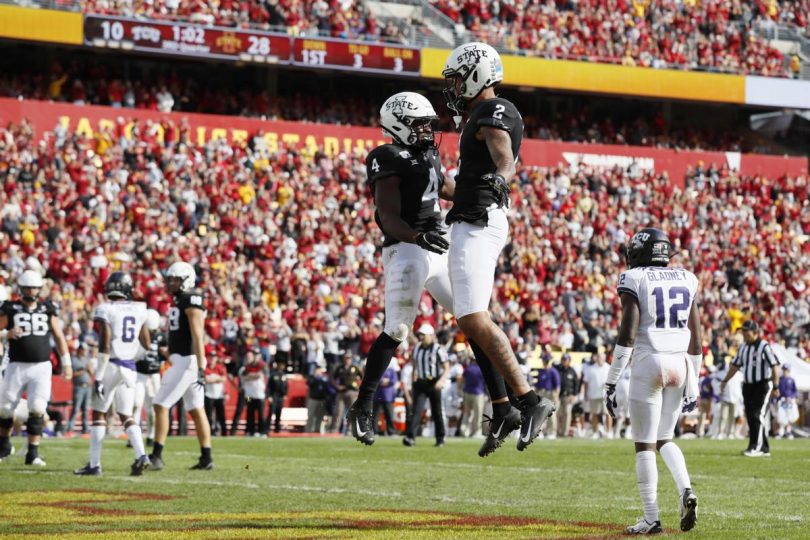Analytics is creeping its way into college football, impressively, because college football is as closed a shop as any in the world.
Using statistics and probabilities is a new way of looking at things, based on letting the incontrovertible laws of math and probability describe what’s happening on the field and reveal the best way to get from Point A to Point B.
Plug the numbers in and see what they say.
Or just watch the game and do the counting yourself.
That’s Gary Patterson’s way. He’s old school. It didn’t change Saturday. The TCU coach watched and counted.
“They only had 61 plays,” he said of Iowa State, following a 49-24 tail-kicking in Ames, Iowa. “You give up 49 points on 61 plays, it means you did a lot of things you weren’t supposed to.”
You see, analytics will tell you it’s a good idea to use all four downs in plus territory. That it’s almost always better to pass. That going for two, done all the time, over the course of a season, is a net positive.
But analytics can’t make a tackle, play a coverage or take the ball away.
Only live, actual defenses can do that, and right now, nobody needs any computer to see TCU is failing to do so.
Against the two good offenses they have faced this season, SMU and Iowa State, the Horned Frogs have surrendered 11 touchdowns, two field goals, 842 yards, 37 first downs, 13 third-down conversions and 5.9 yards per play.
Those numbers are talking.
“Bottom line to it is, defensively, you can’t be happy with 49 points,” Patterson said on the postgame radio show, although, of course it was 42. Seven went on the board without the defense on the field. Iowa State crashed in on Max Duggan with a fumble-forcing sack and scooped it for a touchdown in the second quarter to make it 14-3.
Of course, in the area of takeaways, the Frogs defense wound up painfully deficient, also. The TCU defenders took the ball away from Iowa State zero times.
Numbers can deceive. A fluky play or two can skew perspective. Sometimes somebody slips and falls in wet grass or is caught looking in the backfield while a tight end slips away or just gets fooled.
TCU can’t fall back on that. Defenses get a chance to recover from errors and make a stand when absolutely necessary.
Against SMU, the Frogs got that chance and gave up two fourth-quarter drives that resulted in 10 points and put a comeback out of reach.
Against Iowa State, the Frogs got that chance and gave up two touchdowns in barely two minutes. Yes, one resulted from a short field. But the other? Once TCU had squeezed the deficit down to 11 points with nine minutes left, Iowa State went 9 yards, 8 yards, 3 yards, 32 yards and 9 yards (with a defensive offsides penalty thrown in).
If the Cyclones were trying to burn a little time, it proved impossible. Their efficiency couldn’t be helped. They were doing too much right, and the Frogs never came up with an answer.
“There’s no excuses here,” Patterson said. “Not from the staff. Not from the players. You got to take ballgames when you go into somebody’s house, and we didn’t do that.”
The coaches will examine the charts. They’ll see the shortcomings, and not only from the players. The numbers will tell a story.
But facts are facts. On defense, TCU isn’t getting the job done. SMU and Iowa State really happened.
“We got to have better calls, we got to be better prepared, and we got tackle and do things better,” Patterson said.
No other analysis necessary.







